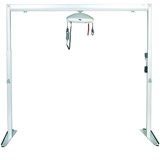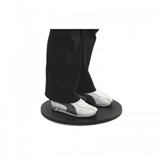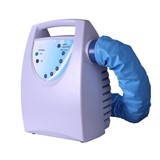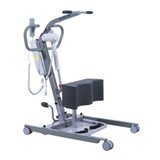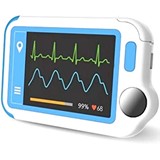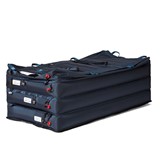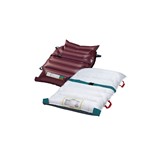Patient hoists play a vital role in the healthcare industry, providing essential assistance to individuals with limited mobility, allowing for safe and comfortable transfers. As these devices facilitate the movement of patients, maintaining impeccable hygiene standards becomes of utmost importance. The significance of hygiene in patient hoist handling extends beyond mere cleanliness; it directly impacts infection prevention and cross-contamination control.
This informative delves into the critical aspects of maintaining hygiene standards in patient hoist usage, focusing on preventing cross-contamination and infections. By adopting a formal and objective tone, we aim to provide healthcare professionals, caregivers, and other stakeholders with valuable insights and expert recommendations to ensure the safety and well-being of patients.
I. Importance of hygiene in patient hoist handling:
Maintaining hygiene in patient hoist usage is paramount to safeguarding the health and well-being of both patients and caregivers.
Proper hygiene practices minimize the risk of infections and promote a safe caregiving environment.
- Cross-contamination can have severe consequences for vulnerable patients, making hygiene a non-negotiable aspect of healthcare.
II. Implementing Proper Hand Hygiene Practices for Caregivers
A. The critical role of caregivers in infection prevention:
Caregivers play a vital role in maintaining a safe and hygienic environment for patients, especially when using patient hoists. Proper hand hygiene is a fundamental aspect of infection prevention, as caregivers can inadvertently transfer harmful pathogens to patients through physical contact.
In healthcare settings, infections can have serious consequences for vulnerable patients, making it crucial for caregivers to adhere to strict hand hygiene protocols.
B. The importance of hand hygiene in hoist usage:
Hand hygiene is essential before and after each interaction with a patient and when handling patient hoists.
Contaminated hands can be a source of cross-contamination, leading to healthcare-associated infections (HAIs) that may compromise patient safety and recovery.
Adhering to proper hand hygiene practices not only protects the patients but also safeguards the health of caregivers and other healthcare professionals.
C. Step-by-step guidelines for proper handwashing techniques:
To ensure effective hand hygiene, caregivers should follow these step-by-step guidelines for proper handwashing:
- Wet your hands: Use clean, running water to wet your hands before applying soap. The temperature of the water should be comfortable for the skin.
- Apply soap: Dispense an adequate amount of soap into your palms. The soap should be a mild, antimicrobial liquid or foam soap recommended for healthcare settings.
- Rub palms together: Rub your palms together to create a lather. Ensure the soap covers all surfaces of your hands.
- Interlace fingers: Interlock your fingers and rub them together to clean the spaces between them.
- Clean the back of hands: Place one hand over the back of the other and vice versa, and thoroughly clean the back of each hand and fingers.
- Clean the thumbs: With a rotational movement, rub the thumb of each hand in the opposite palm.
- Clean fingertips: Using a circular motion, rub the tips of your fingers against the opposite palm to clean under the nails and fingertips.
- Clean the wrists: Cleanse your wrists and lower arms by rubbing them with your hands.
- Rinse thoroughly: Rinse off the soap thoroughly under clean, running water to remove all traces of soap and pathogens.
- Dry hands: Use a single-use disposable paper towel or a touch-free hand dryer to dry your hands completely.
III. Cleaning and Disinfecting Patient Hoists after Each Use
A. Understanding the risk of cross-contamination:
- Cross-contamination in healthcare settings and its implications
- How pathogens can spread through contaminated patient hoists
- Importance of maintaining hygiene standards to reduce infections
B. Recommended cleaning agents and disinfection methods:
- Use of hospital-grade disinfectants for effective sanitization
- Consideration of appropriate concentration levels and contact time
- Compatibility with hoist materials to avoid damage
C. Instructions for effective hoist cleaning procedures:
- Preparing the hoist for cleaning: ensuring power off and battery removal (if applicable)
- Disassembling detachable parts for thorough cleaning
- Wiping down hoist surfaces and controls with disinfectant wipes
- Cleaning hoist slings and accessories using appropriate methods
- Drying the hoist properly to prevent moisture-related issues
- Reassembling the hoist and performing a final inspection before reuse
IV. Choosing Appropriate Hoist Slings and Accessories for Easy Cleaning
A. Impact of sling and accessory materials on hygiene:
- Different materials used in hoist slings and accessories
- Understanding how material choices can affect cleanliness
- Evaluating the potential for harboring bacteria and infection risk
B. Considerations for selecting easy-to-clean materials:
- Opting for non-porous and smooth surfaces that resist bacterial growth
- Ease of stain removal and maintenance of hygiene standards
- Meeting industry standards for infection prevention in material selection
C. Examining different sling and accessory options available:
- Sling types: full-body, stand-assist, toileting, and more
- Accessory options: headrests, leg supports, and padding
- Comparing materials, features, and ease of cleaning for each option
V. Addressing Infection Control Measures for Hoist Surfaces and Controls
A. Identifying high-touch areas prone to contamination:
- Infection hotspots: Identify areas on patient hoists that are frequently touched by caregivers and patients during transfers.
- Control panel and buttons
- Boom and lifting mechanism
- Emergency stop and release handles
- Hand grips and support bars
B. Best practices for disinfecting hoist surfaces and controls:
- Selecting appropriate disinfectants: Use hospital-grade disinfectants approved for medical equipment to ensure effective germ eradication.
- Frequency of cleaning: Establish a cleaning schedule to disinfect hoist surfaces and controls after each use and whenever cross-contamination is suspected.
- Proper cleaning technique: Follow manufacturer guidelines for cleaning and disinfection to prevent damage to the equipment.
- Personal protective equipment (PPE): Ensure caregivers wear appropriate PPE during the cleaning process.
C. Implementing routine maintenance to ensure infection control:
- Regular inspections: Conduct periodic inspections of the hoist for signs of wear, tear, or damage that may compromise hygiene and safety.
- Prompt repairs: Address any issues or malfunctions immediately by contacting the manufacturer or an authorized service provider.
- Calibration and testing: Periodically calibrate the hoist and test its functionalities to maintain optimal performance and safety standards.
VI. Utilizing Disposable and Reusable Slings: Hygiene Considerations
A. Pros and cons of disposable and reusable slings:
Disposable slings:
Pros:
- Single-use: Eliminates the risk of cross-contamination between patients.
- Convenient: No need for laundering or sterilization after use.
Cons:
- Cost: Continuous need for replacements can be more expensive in the long run.
- Environmental impact: Generating more waste compared to reusable slings.
- Reusable slings:
Pros:
- Cost-effective: Reusable slings can be more economical with proper care and maintenance.
- Environmental impact: Reduces the generation of medical waste.
Cons:
- Cross-contamination risk: Requires thorough cleaning and sterilization between patients.
- Storage and maintenance: Proper storage and care are essential to ensure hygiene and longevity.
B. Proper handling and disposal of disposable slings:
- Usage Limitations: Ensure disposable slings are used for a single patient only, and never reuse them.
- Safe disposal: Discard used disposable slings in designated medical waste bins to prevent exposure to other individuals.
C. Cleaning and sterilization guidelines for reusable slings:
- Pre-cleaning: Remove any debris or bodily fluids from the sling immediately after use.
- Laundering: Follow the manufacturer's instructions for laundering, using appropriate detergents and water temperature.
- Sterilization: Employ approved sterilization methods to eliminate pathogens effectively.
- Inspection: Regularly inspect reusable slings for signs of wear and tear, and retire them if necessary.
VII. Training Caregivers on Hygiene Protocols to Ensure Patient Safety
A. The significance of caregiver education in infection prevention:
Caregivers play a crucial role in maintaining hygiene standards during patient hoist usage. Proper education and training are essential to ensure they have the necessary knowledge and skills to prevent cross-contamination and infections effectively. Infections can have severe consequences for vulnerable patients, and education empowers caregivers to take proactive measures to protect patients' well-being. Educated caregivers can recognize potential risks, understand the importance of hygiene protocols, and follow best practices, fostering a safer environment for both patients and themselves.
B. Developing comprehensive hygiene training programs:
Designing structured and comprehensive training programs is vital to impart the necessary information and skills to caregivers. Training should cover various aspects, including hand hygiene, cleaning and disinfection procedures, hoist surface and control maintenance, proper sling and accessory handling, and infection control measures. Collaborating with healthcare professionals, infection control specialists, and experts in patient handling can ensure that the training content is accurate, up-to-date, and aligned with industry standards.
C. Regular evaluation and reinforcement of hygiene protocols:
Training caregivers is not a one-time event; it requires continuous evaluation and reinforcement.
Conducting regular assessments and evaluations can identify any gaps in knowledge or practice, enabling corrective measures to be implemented promptly.
Encouraging open communication and feedback from caregivers can lead to valuable insights and improvements in hygiene protocols.
Reinforcement of hygiene protocols through periodic refresher courses and reminders can help sustain a culture of infection prevention within healthcare facilities.
In conclusion, maintaining impeccable hygiene standards in patient hoist usage is an essential pillar of infection prevention and cross-contamination control within healthcare settings. The information provided in this comprehensive guide underscores the critical importance of hygiene in patient hoist handling, elucidating how it extends far beyond mere cleanliness. By adopting proper hand hygiene practices for caregivers, regularly cleaning and disinfecting patient hoists, choosing appropriate materials for slings and accessories, addressing infection control measures for hoist surfaces and controls, and implementing thorough caregiver training, healthcare professionals and caregivers can collectively contribute to a safer environment for patients and themselves. The meticulous attention to hygiene not only mitigates the risk of infections but also fosters a culture of vigilant care, ensuring the well-being and recovery of patients while upholding the highest standards of healthcare professionalism.



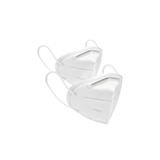
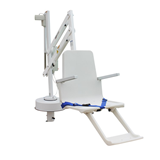
-160x160-state_article-rel-cat.png)
